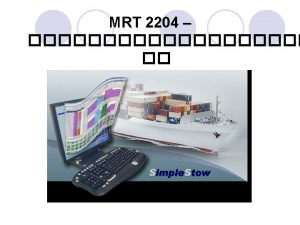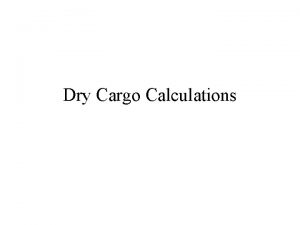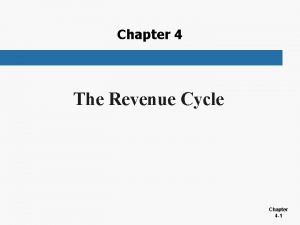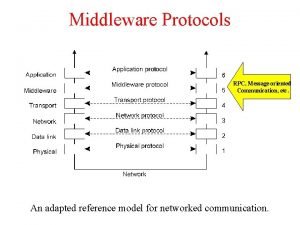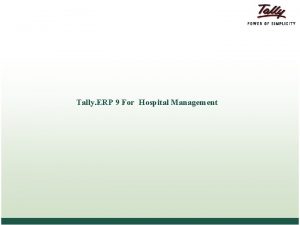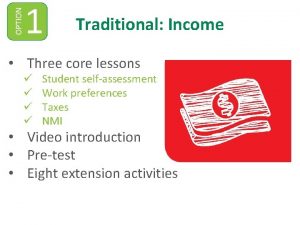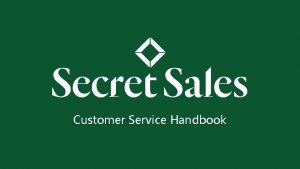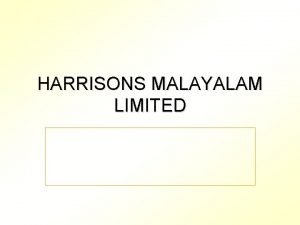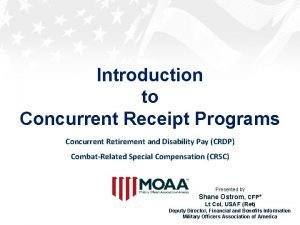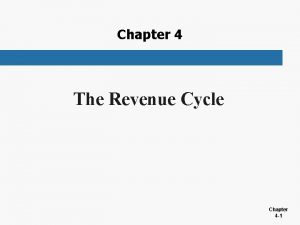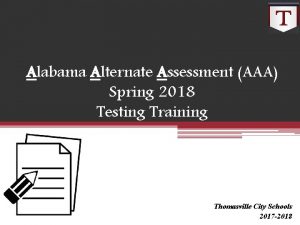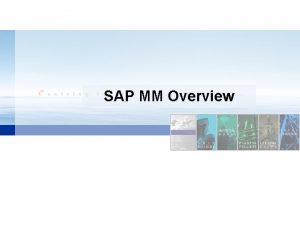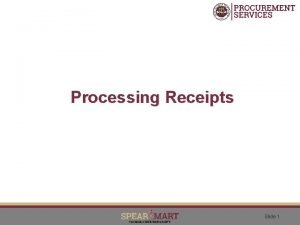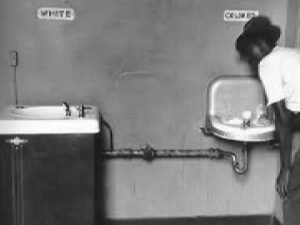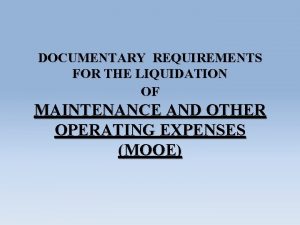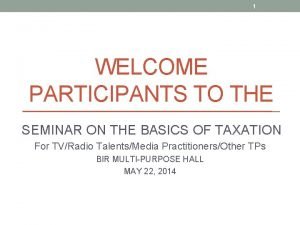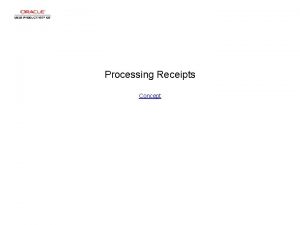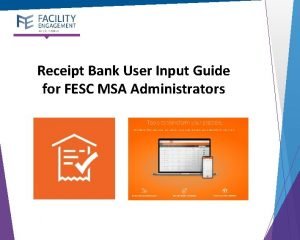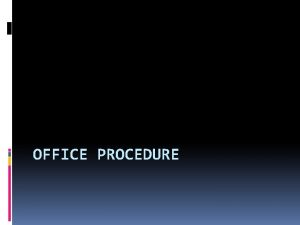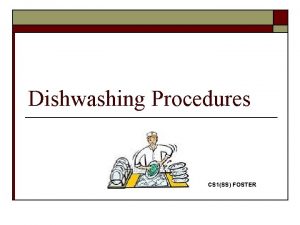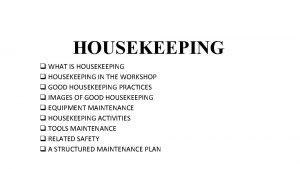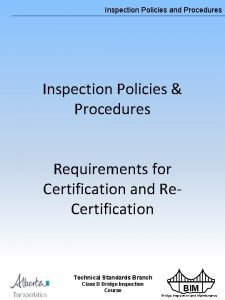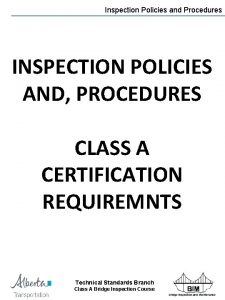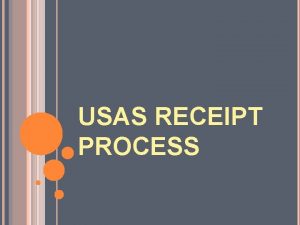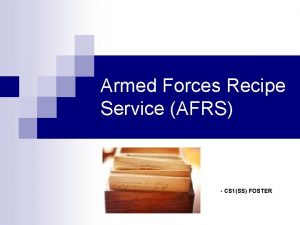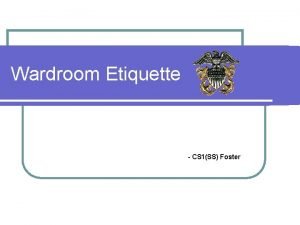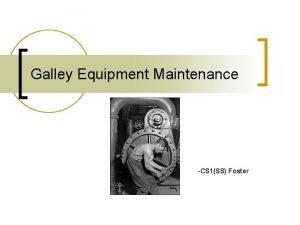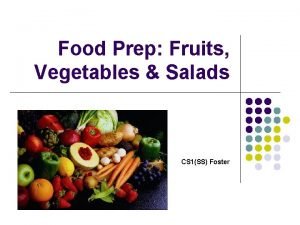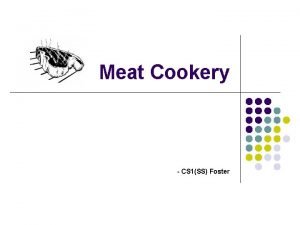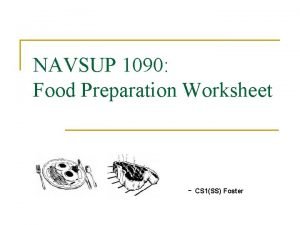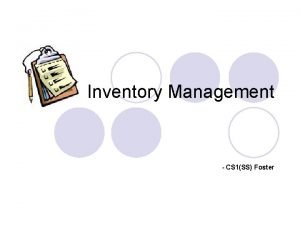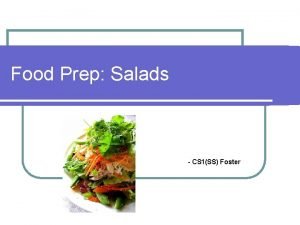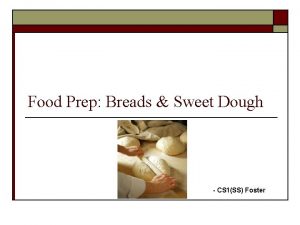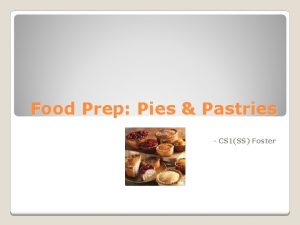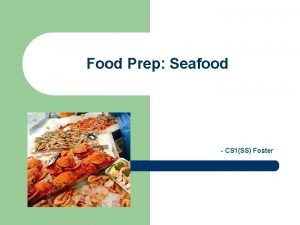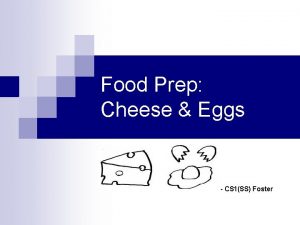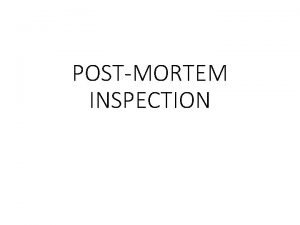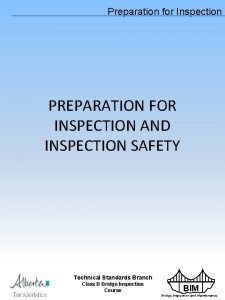Receipt Inspection Stowage Housekeeping Procedures CS 1SS FOSTER


























- Slides: 26

Receipt, Inspection & Stowage/ Housekeeping Procedures - CS 1(SS) FOSTER

Learning Objectives Explain what “Good Housekeeping” is and what it can do ¡ Explore proper receipt, inspection and stowage of food items ¡

Good Housekeeping Refers to the upkeep and cleanliness of food service spaces ¡ Can be both general everyday cleaning, deep cleaning, and maintenance and upkeep of equipment and the building itself ¡

Cleaning Gear All cleaning gear, to include tools & agents, should be stored away from food in their own, designated area ¡ Discard fraying or soiled rags, crumbling sponges, tearing green pads, etc. ¡ All lockers used for storage as well as actual cleaning agents should be accurately and prominently labeled ¡

Food Service Equipment All equipment should be cleaned regularly according to proper procedure ¡ Always electrically secure and/or unplug equipment prior to cleaning ¡ Discard aging equipment, such as gashed or chipped cutting boards, rusty rolling pins, gashed knives, chipped plates, etc. ¡

Rodent/Pest Control Part of the “Good Housekeeping” concept ¡ Prevent entry by: Ø Sealing any entries Ø Keeping areas clean (no food) Ø Properly inspecting food (no cardboard) ¡

Pest/Rodent Control Traps should be used where practical ¡ All pest/rodents (i. e. roaches, flies, mice, rats) are disease ridden and unsanitary ¡ They all either vomit, defecate, urinate or all of the above while eating ¡

Rats Chew holes in packaging ¡ Look for droppings and “runways”, grease marks on the wall where rodents rub against ¡ Defecate and urinate on food while eating ¡

Flies Live in filth, feed on garbage, feces, etc. ¡ Must vomit on food to soften it while eating ¡ Defecate while eating ¡ Maintain good screens and air shields in doorways ¡

Roaches Live in filth, defecate on food ¡ Like damp, dark places ¡ Tend to hide in the cardboard of cases of food, so check and discard if possible ¡

Receipt, Inspection & Stowage There is a process that starts upon receipt of food ¡ The Culinary Specialist is responsible for ensuring it happens correctly ¡ Every step is critical ¡

Receipt ¡ 1) 2) 3) 4) When the food arrives at the dining facility, several things must happen: Temp the truck to ensure food is arriving at acceptable temperature Inspect food items for quality, quantity and ensure everything arrived. What’s on the pallet is what’s on the receipt When complete, circle quantities as accurate, sign the customer signature block and date it, and record box temperatures (OUR BOXES) as well as the truck temperature on the receipt Before turning receipt over to Records Keeper, you must stamp the back accepting responsibility for food and sign/date/print name & rank

Stamp Example

Receipt Example (SYSCO)

Inspection ¡ ¡ Inspection is an entirely separate issue The Army Veterinarians are responsible for inspecting food prior to use receiving it (at the source, SPV) When the food arrives at the dining facility, it is the responsibility of the designated receipt inspector (CS) or the Medical Dept. Representative (MDR). There are many signs of quality (see handout) that will help you determine whether to accept a delivery

Inspection ¡ Ø Ø Part of this process includes temping the truck. This alone is grounds to reject a shipment, if the truck is not in the acceptable ranges (internal): Chill: 32 - 41°F Frozen: 0°F or below Dry: Items requiring “Protection from Heat” must be below 70°F Ice Cream: recommended temp. of -10°F, no higher than 0°F

Inspection ¡ Reasons to reject shipments include: 1) Products shipped in error Products damaged in shipment Products with concealed or latent defects Products that are recalled Products that do not meet shelf life requirements Products that do not meet minimum quality requirements Products delivered in unsanitary vehicles Products delivered that fail to meet minimum/maximum temperature requirements Over-ordered products in new condition. 2) 3) 4) 5) 6) 7) 8) 9)

Defects ¡ Ø Ø Ø Non-hazardous Defects: Tomato Paste labeled Ketchup Steak w/ unacceptable amount of fat Deviations in Case Counts Hazardous Defects: Temperature Damage (Thawing/Re-freezing) Received outside acceptable temp. range Physical Hazards (glass, wood, etc) Swollen/Leaking cans Damaged/Leaking cases Offensive odors/colors

Defects ¡ Ø Standard Form 364: Report of Discrepancy (ROD) Used when materials with defects are from SPV DD Form 1608: Unsatisfactory Material Report (UMR) Used when materials with defects are from a Government source

Stowage ¡ ¡ ¡ All storage spaces will be kept in a neat and orderly fashion Food is not to be stored directly on the deck, 4” from bulkheads and coils Always rotate stock, First In First Out (FIFO) Air circulation is critical to maintaining and even extending the shelf life of perishable foods Ethylene blankets are strongly recommended for boxes containing ripening fruits to extend shelf life

Storage Conditions ¡ Ø Ø Ø Frozen Foods (Perishable): 0°F or below During shipment, may not exceed 10°F Always rotate stock (FIFO) Look for USDA stamp on meats Chilled Foods (Perishable): 32 - 41°F Critical to rotate stock Always check on chilled stock, esp. FF&V to ensure anything that looks like it’s starting to turn is used or discarded immediately

Storage Conditions ¡ Ø Ø Ø Dry (Semi-perishable): Cool, dry, well ventilated space Improper storage or mishandling, or storing for very long periods can result in spoilage Certain items (emulsions) suffer when frozen Extreme (high) temperatures can accelerate spoilage and damage foods Moisture (high humidity) can damage foods via accelerating bacterial growth, promoting mold or rust

Questions?

Review ¡ - ¡ ¡ - What is “Good Housekeeping”? Refers to the cleanliness and upkeep of foodservice spaces How should cleaning gear be stowed? Separately in it’s own, designated area; labeled What do you always do prior to cleaning a piece of equipment? Electrically secure and/or unplug

Review ¡ - ¡ - How do rodents and insects spread disease? Walking on, defecating on, urinating on or vomiting on the food What things must make it on to the customer copy of the receipt? Circle received quantities, sign the signature block, date the invoice, the temperature of the truck and the stamp on the back Who is responsible for inspecting stores straight from the vendor? Medical Department Representative (MDR) and Receipt Inspector (CS)

Review ¡ ¡ ¡ - What temperature is chill food stores at? 32 - 41°F Frozen? 0°F or below What maximum temperature can you receive frozen foods? 10°F
 Capital receipt and revenue receipt
Capital receipt and revenue receipt Chrome ore stowage factor
Chrome ore stowage factor Stowage plan for bulk cargo
Stowage plan for bulk cargo Stowage factor calculation formula
Stowage factor calculation formula General cargo stowage plan
General cargo stowage plan An advantage of real-time processing of sales is
An advantage of real-time processing of sales is Receipt-based transient synchronous communication
Receipt-based transient synchronous communication Opd receipt
Opd receipt Sales receipt analysis extension activity answers
Sales receipt analysis extension activity answers Hermes denial of receipt form download
Hermes denial of receipt form download Prr number in receipt
Prr number in receipt Crsc pay chart 2021
Crsc pay chart 2021 Corrected ads
Corrected ads Revenue and receipt cycle flowchart
Revenue and receipt cycle flowchart Accounting for non trading organisation
Accounting for non trading organisation Aaa assessment test
Aaa assessment test Sap pb00
Sap pb00 Where is receipt number on woolworths docket
Where is receipt number on woolworths docket How to add missing receipt affidavit in concur
How to add missing receipt affidavit in concur Jim crow (character)
Jim crow (character) Reimbursement expense receipt
Reimbursement expense receipt Tnea acknowledgement receipt
Tnea acknowledgement receipt Non vat receipt sample philippines
Non vat receipt sample philippines Receipt processing
Receipt processing Receipt bank user guide
Receipt bank user guide Dak receipt register format
Dak receipt register format What are the examples of revenue expenditure
What are the examples of revenue expenditure


